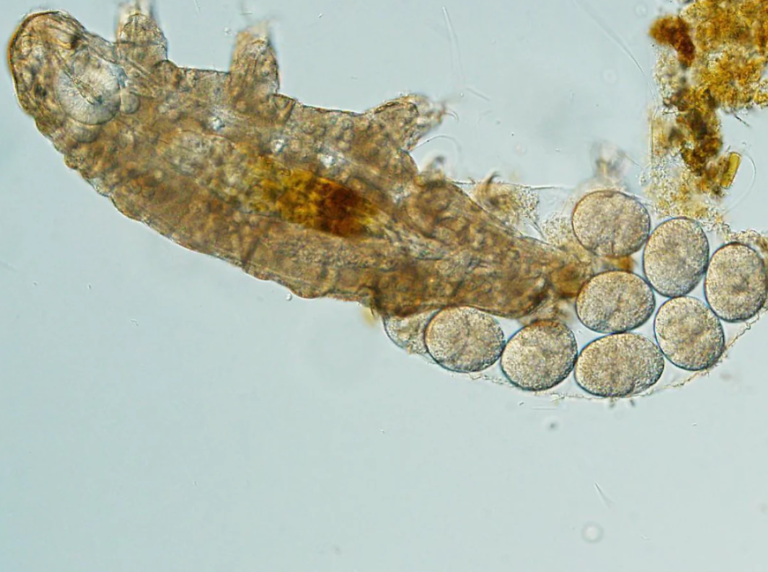
"NOM NOM NOM"
Tardigrades, also known as water bears or moss piglets, are microscopic animals that have captured the imagination of scientists and the public alike. These tiny creatures are found all over the world, from the deepest oceans to the highest mountains, and are known for their incredible resilience and adaptability. Here are some funny facts and interesting information about tardigrades that you might not know.
We are incredibly tough!
One of the most amazing things about tardigrades is their incredible resilience. These tiny creatures can survive in some of the harshest environments on Earth, including extreme heat and cold, high pressure, and even the vacuum of space. Tardigrades are able to do this by entering a state of suspended animation known as cryptobiosis, in which they can survive for years without food or water.
Frozen?
Tardigrades have an amazing ability to survive being frozen for long periods of time. In fact, some tardigrades have been frozen for up to 30 years and then thawed out, and they have still been able to survive and reproduce. This ability to survive freezing is due to the presence of a special protein that protects their cells from damage.


Boiled?
Tardigrades are incredibly resilient creatures, and they can even survive being boiled in water for a short period of time. Researchers have found that tardigrades can survive being boiled for up to 20 minutes, as long as they are in their dehydrated state. When they are rehydrated, they can return to their normal state and continue to live.
Tardigrades have a unique way of reproducing
Tardigrades have a unique way of reproducing that is different from most other animals. Instead of mating, female tardigrades lay their eggs in a protective shell, which is then fertilized by sperm that is stored in a special gland. The eggs then hatch into miniature versions of the adult, which grow and develop until they reach maturity.

We like space!
In 2007, a group of tardigrades were sent into space on a mission to test their ability to survive in the vacuum of space. The tardigrades were exposed to the harsh conditions of space for 10 days, and when they returned to Earth, they were still alive and able to reproduce.
Tardigrades have a mouth that looks like a bear trap
If you’ve ever seen a tardigrade up close, you might have noticed that they have a mouth that looks like a bear trap. The tardigrade’s mouth is actually made up of two parts that open and close like a trap, allowing them to capture and eat their prey.
We can survive without food or water for years
Tardigrades are able to survive without food or water for years, thanks to their ability to enter a state of suspended animation known as cryptobiosis. In this state, their metabolism slows down to almost nothing, allowing them to survive without food or water for extended periods of time.
They have been around for a long time
Tardigrades have been around for a long time, with fossil evidence dating back to the early Cambrian period, over 500 million years ago. They have survived multiple mass extinction events, and have been able to adapt to changing environments over millions of years.
Radiation?
Tardigrades are able to survive high levels of radiation, which would be lethal to most other animals. Researchers have found that tardigrades are able to repair DNA damage caused by radiation, allowing them to survive in environments with high levels of radiation that would be deadly to other organisms. Some scientists have even suggested that tardigrades could be used as a model for studying radiation resistance and potentially developing new treatments for radiation sickness.
Tardigrades are the strongest living creatures in the universe!
As amazing as it may sound, tardigrades are actually the strongest living creatures in the universe! Their incredible resilience and ability to survive in extreme conditions make them the toughest and most adaptable organisms known to science. Whether they are living in the depths of the ocean or floating through space, tardigrades are a testament to the incredible adaptability of life on Earth.
In conclusion, tardigrades are some of the most fascinating and incredible creatures on the planet. Their resilience, adaptability, and unique characteristics have captured the imagination of scientists and the public alike. From their ability to survive in extreme conditions to their unique method of reproduction, tardigrades are truly one of a kind. And with their status as the strongest living creatures in the universe, they are a reminder of the amazing diversity and resilience of life on Earth.
